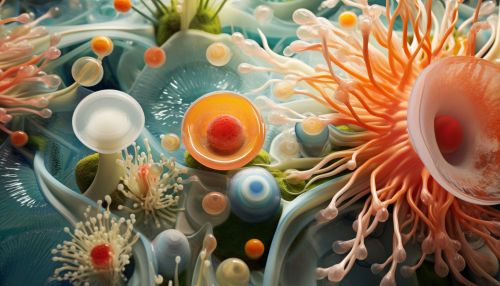The Chemistry of Reactive Nitrogen Species and Plant Stress Responses
Introduction
Reactive Nitrogen Species (RNS) are a group of nitrogen-based molecules that are highly reactive and play crucial roles in various biological processes. They are produced in cells through various metabolic pathways and their levels are tightly regulated. In plants, RNS are involved in a wide range of physiological processes, including growth, development, and responses to environmental stresses. This article will delve into the chemistry of RNS and their role in plant stress responses.


Chemistry of Reactive Nitrogen Species
Reactive Nitrogen Species are nitrogen-containing molecules that have unpaired electrons, making them highly reactive. They include nitric oxide (NO), nitrogen dioxide (NO2), peroxynitrite (ONOO-), and nitrous acid (HNO2). These molecules are produced in cells through various metabolic pathways, including the nitric oxide synthase (NOS) pathway, the nitrate reductase pathway, and the nitrite reductase pathway.
Nitric Oxide (NO)
Nitric oxide (NO) is a small, diffusible, and highly reactive molecule that is produced in cells by the enzyme nitric oxide synthase (NOS). It is a free radical, meaning it has an unpaired electron, which makes it highly reactive. NO can react with other molecules to form more stable compounds, such as nitrite (NO2-) and nitrate (NO3-).
Nitrogen Dioxide (NO2)
Nitrogen dioxide (NO2) is a highly reactive gas that is produced in cells from the oxidation of NO. It can react with other molecules to form more stable compounds, such as nitrate (NO3-) and nitrite (NO2-).
Peroxynitrite (ONOO-)
Peroxynitrite (ONOO-) is a highly reactive nitrogen species that is formed from the reaction of NO with superoxide (O2-). It is a potent oxidant and can cause damage to cells if its levels are not tightly regulated.
Nitrous Acid (HNO2)
Nitrous acid (HNO2) is a weak acid that is formed from the reduction of nitrite (NO2-). It can donate a proton to form nitrite, or it can lose a proton to form nitronium ion (NO2+).
Reactive Nitrogen Species and Plant Stress Responses
Reactive Nitrogen Species play a crucial role in plant stress responses. They are involved in the regulation of various physiological processes, including growth, development, and responses to environmental stresses. The levels of RNS in cells are tightly regulated, and any imbalance can lead to oxidative stress, which can cause damage to cells.
Role of RNS in Plant Growth and Development
RNS are involved in the regulation of plant growth and development. For example, NO is involved in the regulation of root growth and development. It is also involved in the regulation of stomatal closure, which is crucial for the regulation of water loss in plants.
Role of RNS in Plant Stress Responses
RNS are also involved in plant stress responses. For example, NO is involved in the regulation of plant responses to drought stress. It is also involved in the regulation of plant responses to pathogen attack. In addition, RNS are involved in the regulation of plant responses to heavy metal stress.
Conclusion
Reactive Nitrogen Species are crucial for the regulation of various physiological processes in plants, including growth, development, and responses to environmental stresses. Understanding the chemistry of RNS and their role in plant stress responses can provide insights into the mechanisms of plant stress tolerance and can potentially lead to the development of strategies for improving plant stress tolerance.
